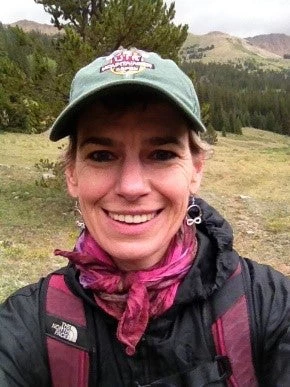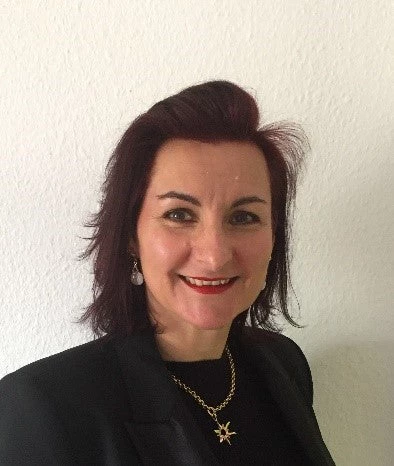 A forest fire burns in Bouïra, Algeria.
A forest fire burns in Bouïra, Algeria.
This past summer, we saw images of wildfires ravaging Algeria and other countries in the Mediterranean. Vast, forested areas were destroyed, precious lives taken, properties engulfed in flames, and millions of dollars of economic assets lost. The foundations of ecosystems have been weakened. Is this year the worst we have ever seen when it comes to wildfires?
New technology allows us to predict fires better than before, and to monitor them. Data shows that, in recent decades, the world has been burning with growing intensity. Climate change has exacerbated the threat, as increasing temperatures and changing rainfall patterns add, forgive the pun, fuel to the problem.
For perspective, a government white paper on The Impact of Climate Change in Algeria shows that, although forests and trees cover less than 1% of Algeria’s land mass, forest fires pose one of the three biggest threats to lives, property, and economic activity in the country. Between 2010 and 2019, Algeria recorded nearly 3,000 fires, burning an area equivalent to about 30,000 soccer fields a year. Annual losses in assets are a staggering 1.5 billion Algerian dinar (DA), about US$11 million, and the compensation paid to disaster victims reached 600 million DA, US$4.4 million, in 2020.
Sustainable forest management: a proven approach to address the risk of wildfires effectively
So, do we just accept that there will be more fires and more devastation and bear the resulting losses? If global efforts remain insufficient to curb greenhouse gas emissions, climate change will increase the potential for more frequent, more intense fires.
However, there is a way to transform how forests are managed and reduce the risk of fire while increasing the benefits forests provide. That approach is known as Sustainable Forest Management (SFM) and it has been implemented in many parts of the world. It aims to improve the economic, social, and environmental value of forests for generations — present and future — while taking the risk of fire on board.
What could this mean for Algeria? The answer lies in integrating many aspects of forest management, such as restoring historically healthier conditions, reducing pressure on forests, changing public behavior through education and community outreach, and building community resilience in areas that are fire-hotspots; reforesting and providing more funding for fire prevention, such as for creating firebreaks; and improving the detection, training, and preparation for putting fires out swiftly.
Other countries such as Turkey and India face similar risks and have started including them in SFM, using a spatial or landscape approach. Using this approach, the different components of a landscape are taken into account — agriculture, forestry, buildings, and roads. And managing forest fires is considered part and parcel of managing forests.
Tackling forest fires in Algeria and the World Bank’s offer of more technical support
Over the past year, the World Bank has worked on a Disaster Risk Management (DRM) diagnosis of forests with the Algerian Ministry of Interior’s National Delegation for Major Risks (Delegation Nationale des Risques Majeurs, DNRM) and 12 other government bodies, and has co-organized a virtual study tour to learn from global DRM experiences, including on how forest fires are managed in contexts such as Portugal and France.
"Our webinar series were an opportunity to share good practices and discuss analytical tools to support Algeria’s efforts to find ways of integrating fire risk into sustainable forest management," said Emmanuel Cuvillier, the World Bank’s Resident Representative in Algeria.
Initial findings of the DRM diagnosis suggest that, in order for Algeria to appropriately respond to forest fires, the country needs not only to modernize its fire equipment and fire-fighting techniques but also allocate enough resources to allow all key stakeholders do their jobs. Algeria should also develop an integrated Early Warning System (EWS) that includes forest fire warning, and raise public awareness to encourage behavior change.
EWS monitoring multiple hazards, such as those found in Southern Europe and Canada, play a major role in preparedness and risk reduction. Using sophisticated weather observations and forecasts, EWS can pinpoint when the danger exists of a forest fire breaking (with a fire danger rating system), detect fires early, and trigger pre-firefighting plans before forest fires materialize, or get out of hand. With Bank support, for example, in 2017 the Turkish government carried out an analysis of its forestry sector and the threats that existed to its forest ecosystems, including fire.
Although much is being done by Algeria to tackle the challenge of managing forest fires, no country can confront emergencies and natural disasters alone. Forest policy and resource analysis generates data and information that could inform the dialogue between government agencies and international partners on sustainable forest management in order to protect not only Algeria’s forest ecosystems from threats such as fires but also the entire population.




Join the Conversation
Hello! I am preparing a research paper about the role of social media in building community disaster resilience, and I want to talk about the Algerian forest fires of 2021. Any help or information about the topic will be much appreciated. Much obliged. Mrs Malika